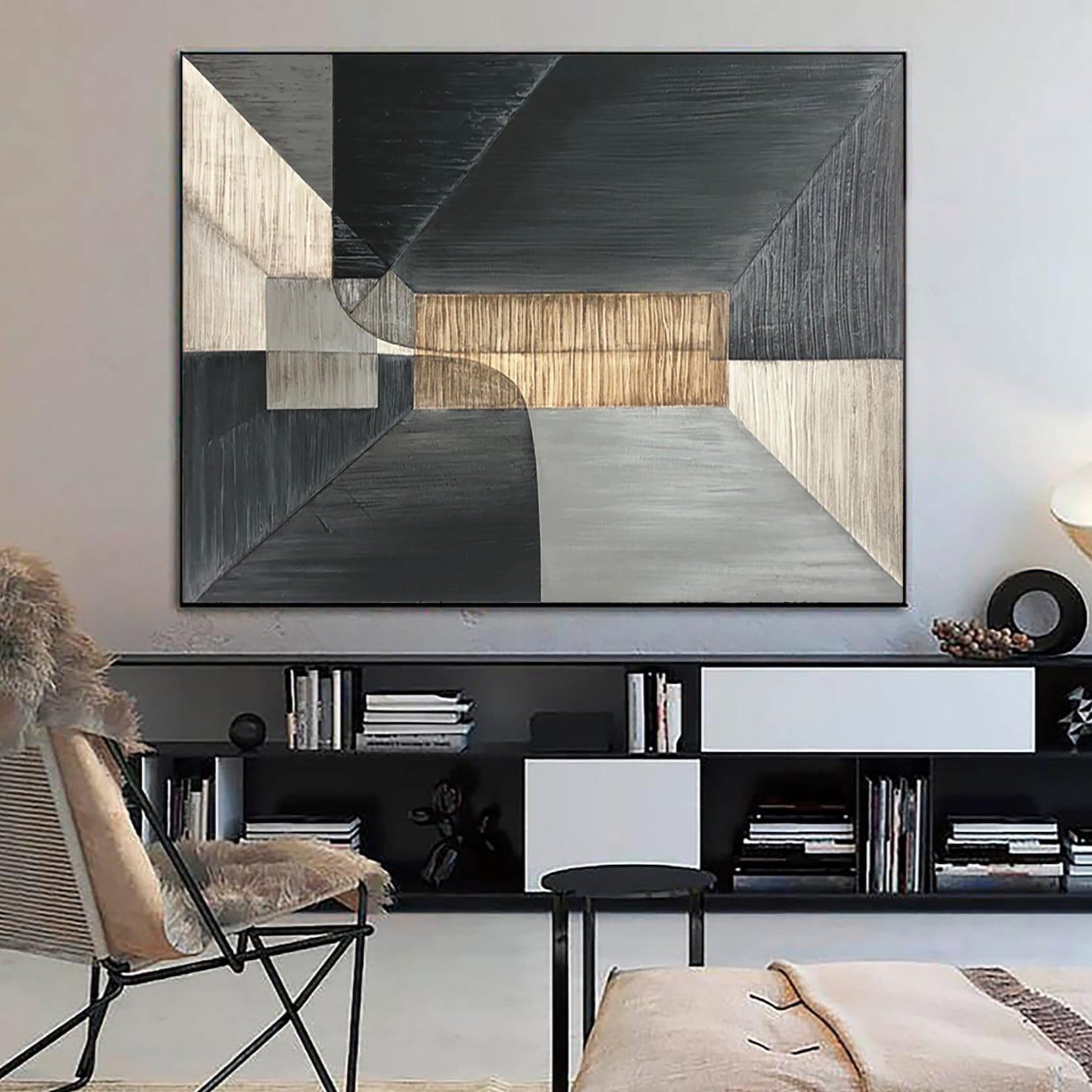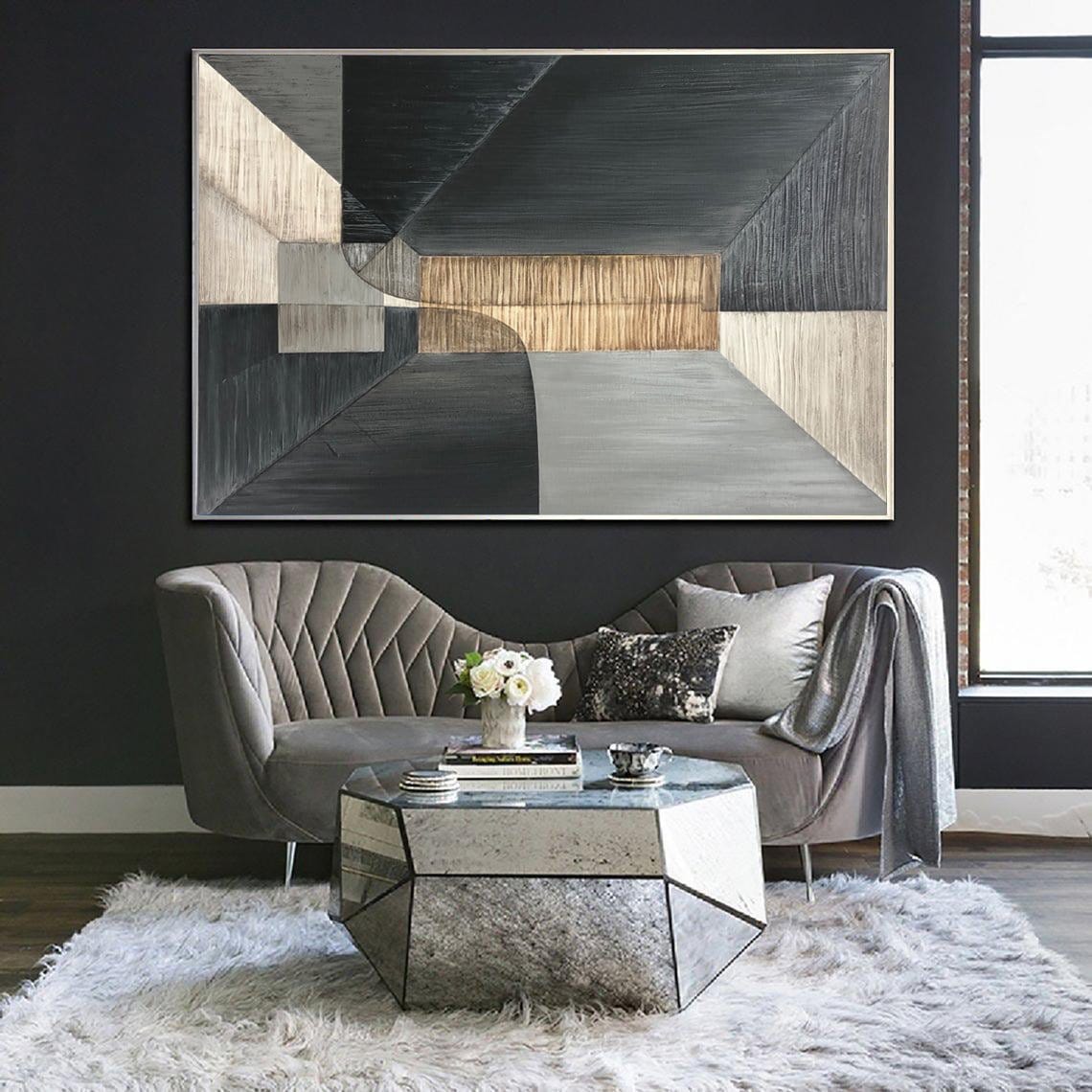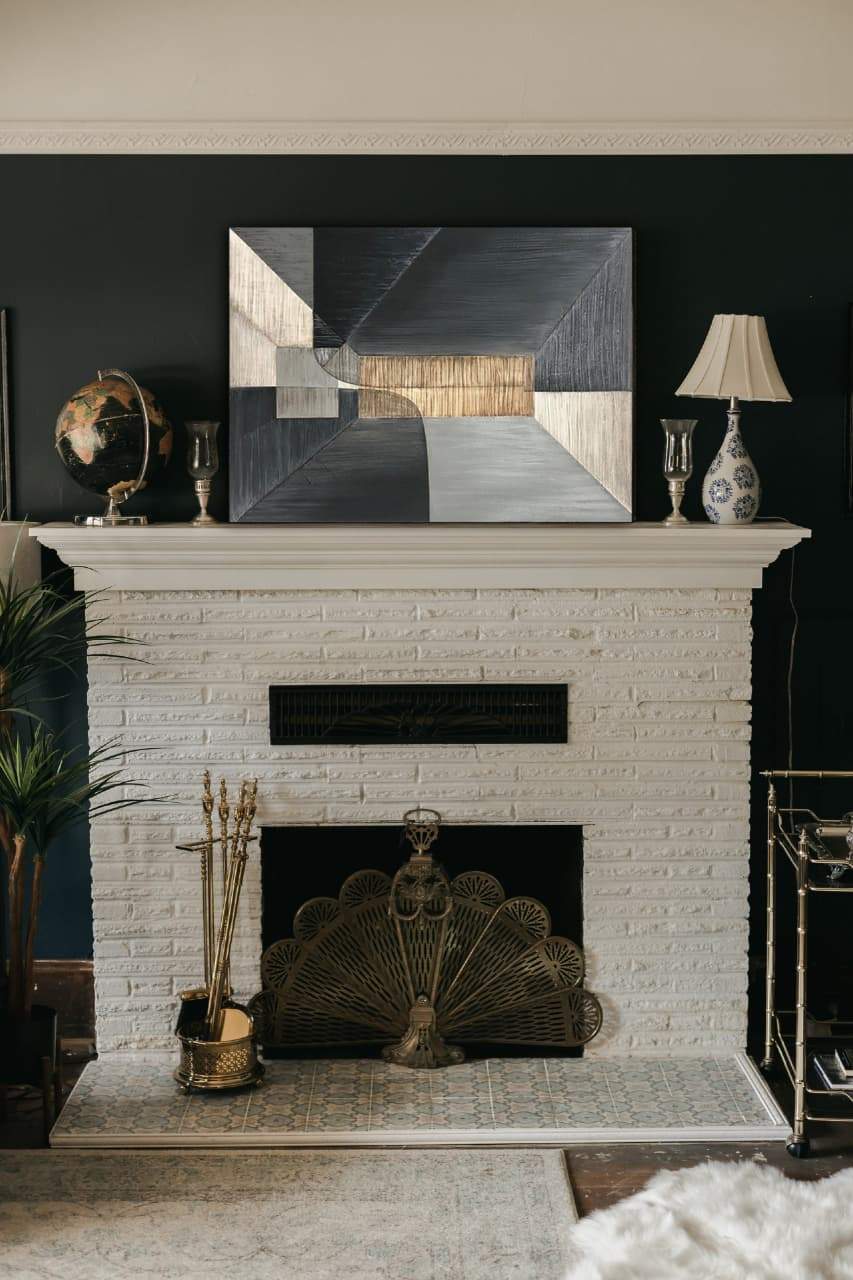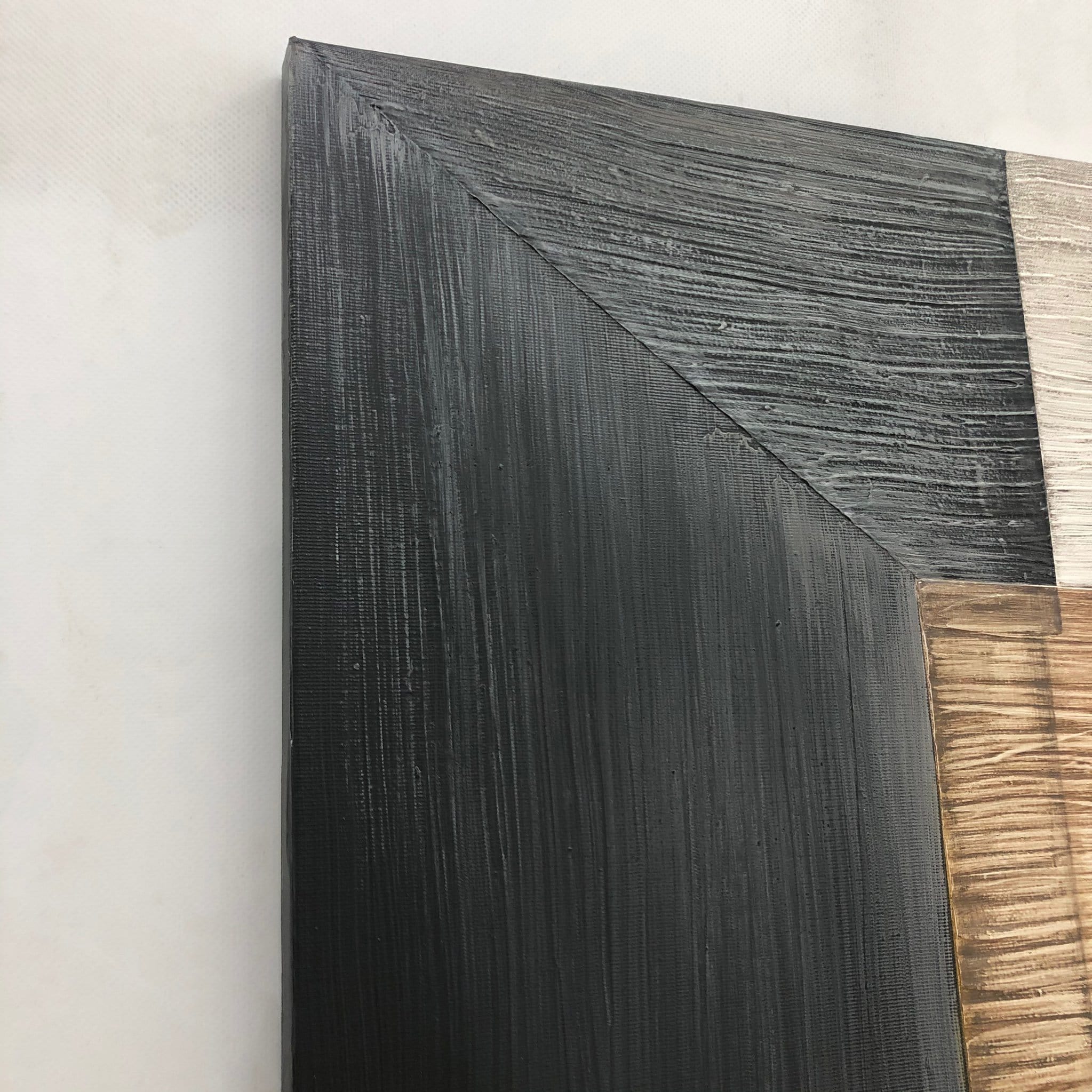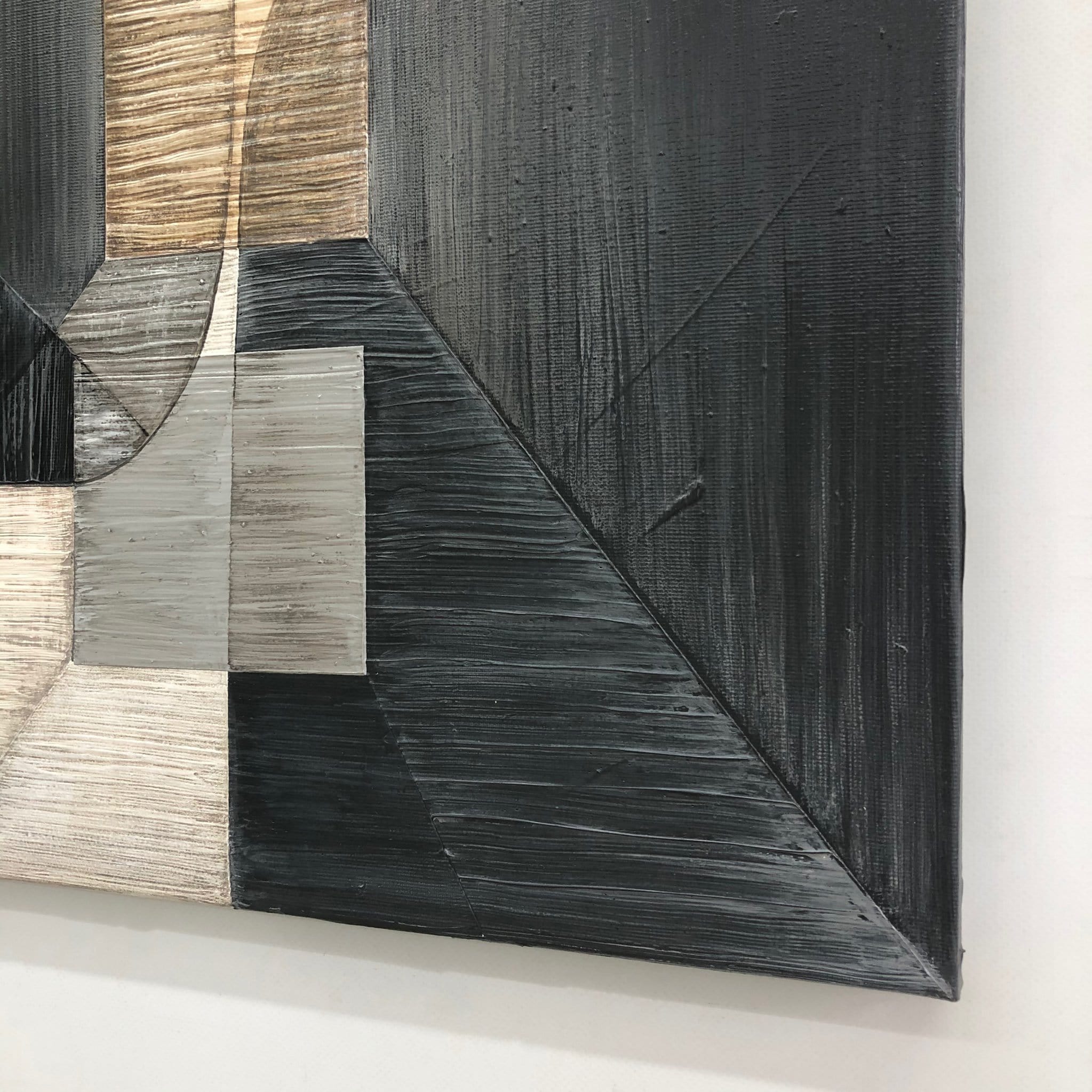Geometric abstraction as a transformational art form dates back to the early 20th century when there emerged the revolutionary Cubism movement, which was launched in 1908 by Pablo Picasso and Georges Braque. This avant-garde approach dissected common things into their component geometric shapes and then pieced them back together from various angles to produce flat patterned compositions that alluded to three-dimensional forms. Cubism itself developed into two primary schools: Synthetic Cubism, which employed simplified and fractured elements to convey a certain scene or context, and Analytic Cubism, which meticulously recreated objects.
Explore more in our Geometric Abstract Paintings collection, where contemporary artists continue to build on these traditions.
Cubism opened the door to a wide range of artistic groups that investigated and embraced geometric forms in art more thoroughly over time to create compositions that have both visual and symbolic meaning. Shapes in geometric abstractions are used as unexpected and sophisticated means of conveying thoughts and feelings.
In contemporary practice, as seen in collections from galleries like TrendGallery, artists continue to explore these concepts, creating works that challenge and delight viewers with their geometric colorful abstract art. This article tells about the most famous artists in the world of geometric art.
1. Vera Malnár: The Intersection of Technology and Geometric Art
Her approach to art seamlessly blends hand-painted techniques with digital innovation, capturing the essence of "geometric colorful abstract art" through the use of vibrant, dynamic shapes. In her creative process, the initial concept begins with artistic intuition, which she then expands using digital tools to explore a multitude of compositional possibilities. This integration of technology allows for the generation of countless ideas, pushing the boundaries of traditional art forms to create modern, compelling pieces.
Vera challenges the traditional role of intuition in art, suggesting that the randomness afforded by advanced computer algorithms can effectively substitute the spontaneous generation of ideas traditionally attributed to human creativity. She views the computer not just as a tool for generating random patterns, but as a crucial collaborator that accelerates the search for the perfect composition. This digital assistant does not just create ideas but refines them, offering directions and insights that significantly influence the final artwork.
Vera's work, therefore, stands at the intersection of technology and traditional art, a testament to how digital tools can enhance and expand a creative vision of a contemporary artist.

Identiques mais différents, 2010 by Vera Molnar
2. Gottfried Honegger: Social Commentary Through Pure Geometric Forms in Art
Gottfried Honegger's artistry emerges from a unique blend of cultural influences and modest beginnings. Born in a small, resource-limited village to a Latin mother and a German father, Honegger was deeply influenced by his bicultural heritage and the sparse conditions of his childhood home, where even basic amenities like lighting were absent. These formative experiences fueled his creativity and forged an extraordinary imagination, driving him to explore both aesthetic and social themes through his art.
Honegger's minimalist approach uses geometric forms not only for their visual appeal but also as vehicles for deeper social commentary. His art resonates with those seeking simplicity and clarity, as it balances shape and color to reflect the dual nature of his cultural identity and the socio-economic challenges of his upbringing. Honegger believes that art acts as a primary form of human expression — akin to a first language — that transcends words and directly communicates emotions and experiences.
This direction brings his aesthetic closer to the works from our Minimalist Abstract Paintings collection.
His philosophy, "The whole history of art is an emotional situation," underlines his belief in the power of art to evoke and engage. Through his works, Honegger plays with the notion that new experiences and unique creations are born from the playful interaction of thought and visualization, emphasizing art as a pure and trustworthy endeavor.
For those who appreciate contrast and clean lines, check out our collection of Black & White Abstract Paintings.
 Without title I, Circa 1972 by Gottfried Honegger
Without title I, Circa 1972 by Gottfried Honegger
3. Nicolas Dubreuille: Experimenting with Color and Structure in Geometric Designs of Modern Art
How does Nicolas's method of layering shapes and employing vibrant palettes result in captivating artworks, particularly suited for contemporary interiors? Nicolas has transitioned from primarily using traditional materials like clay in his sculptures and ceramics to embracing more modern mediums such as resin and aluminum, which he finds ideal for sculpting precise forms. "I started to use resin and aluminum more than clay as I consider these materials the best ones to shape the drawings," he explains.
In his creative process, Nicolas engages with the language of geometry, constructing his pieces by incorporating elements from his previous works, thus creating a continual dialogue between the old and the new. This method resembles building upon a skeleton, each addition transforming it further into a complete artwork. His approach to color is equally innovative: he experiments with bright and glittering accents to elevate the simplicity of geometric forms, ensuring that each piece stands out with its unique palette and luminosity.
For example, in one of his series, although the composition remains consistent across canvases, the use of distinct color accents, tones, and lighting makes each painting uniquely compelling. Recently, Nicolas has begun to focus on making the shapes in his artworks more radiant and defined, paring down his color palette to six vivid and distinct hues.
 Ref., by Nicolas Dubreuille
Ref., by Nicolas Dubreuille
4. Brent Hallard: The Beauty of Simplicity in Geometric Abstraction
Explore the minimalist but at the same time profound artistry of Hallard, whose geometric forms are typically rendered in monochromatic or restricted color schemes. Hallard’s work is characterized by its radiant simplicity and impeccable symmetry, often employing aluminum as a canvas to enhance the minimalist aesthetic. His approach to art is intentionally straightforward and creates pieces that rely on simple forms and visual illusions to engage directly with the viewer.
Hallard’s paintings are devoid of complex imagery; instead, they leverage the power of simplicity to provoke and refine the viewer’s perception and imagination. There are no formal constraints within his pieces, allowing the essence of purity and precision to dominate. This simplicity is not just a stylistic choice but a philosophical one, as Hallard believes that the more straightforward the artwork, the more profoundly it can communicate and soothe the viewer's mind.
His focus on symmetry and clean lines makes his artwork particularly suitable for modern spaces, catering to those who value visual order and clarity. Each piece invites viewers to appreciate the tranquility of its composition, making Hallard’s works ideal for environments where harmony and understated elegance are cherished.
 Left: Claudia Damichi - Walk this Way, 2018. Acrylic on canvas, 138 x 138 cm / Right: Claudia Damichi - Talk this Way, 2018. Acrylic on canvas, 138 x 132 cm. by Brent Hallard
Left: Claudia Damichi - Walk this Way, 2018. Acrylic on canvas, 138 x 138 cm / Right: Claudia Damichi - Talk this Way, 2018. Acrylic on canvas, 138 x 132 cm. by Brent Hallard
5. Paul Klee: The Evolution from Realism to Geometric Abstraction
Paul Klee's artistic journey reflects a deep transformation from capturing realistic landscapes to embracing abstract compositions marked by geometric shapes. Initially, Klee focused on painting landscapes in a relatively realistic style, but over time, his approach evolved into a simpler, more abstract expression. This shift saw recognizable elements such as buildings dissolve into arrays of multicolored rectangles and shapes on the canvas.
Music significantly influenced Klee's work, a nod to his early musical education, which deeply shaped his approach to visual art. In his paintings, Klee arranged colors in patterns reminiscent of musical notes on a staff, creating a visual harmony that mirrors melodic compositions. His artworks often resemble puzzles, inviting viewers to decipher the underlying system that governs the placement of colorful geometric forms.
Klee’s philosophy consisting in the thought that "art should go beyond what photographs represent" has inspired generations. His innovative use of color and geometric patterns has made him a pivotal figure for artists and collectors who are captivated by geometric abstraction, demonstrating how art can transcend direct representation to evoke deeper intellectual and emotional responses.

Black Columns in a Landscape, 1919 by Paul Klee
It is Time to Bring Geometric Art to Your Modern Interior!
Are you looking for custom geometric abstract paintings that resonate with the innovative styles of artists like Paul Klee? TrendGallery.art specializes in creating bespoke pieces tailored to individual preferences, offering everything from bold and colorful geometric designs to minimalist abstract forms.
Perfect for hanging in living rooms modern paintings to create a focal point, or in office spaces to inspire creativity and innovation, these paintings adapt seamlessly to various environments, adding an elegant artistic touch where it is most desired. Whether enhancing a home or an office, a piece from TrendGallery can introduce a touch of sophistication and creativity to any setting!
Why Does Geometric Abstraction Continue to Captivate the Art World?
Geometric shapes in art have maintained their appeal through the years, offering a unique blend of simplicity, creativity, and emotional depth. For those looking to integrate this up-to-date style into their personal or professional spaces, TrendGallery offers personalized geometric abstract art that perfectly complements modern design aesthetics.
Explore our collections to find a piece that transforms your interior and reflects your unique perspective! Visit TrendGallery's online shop today to discover and purchase a unique work of art that can enhance any space with sophistication and artistic flair!





















